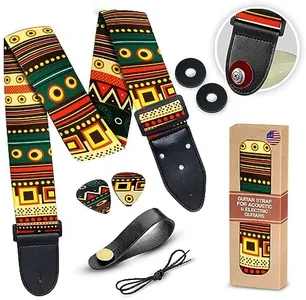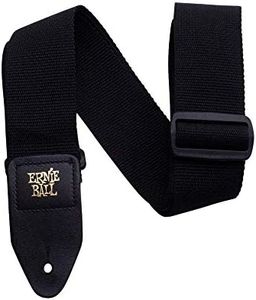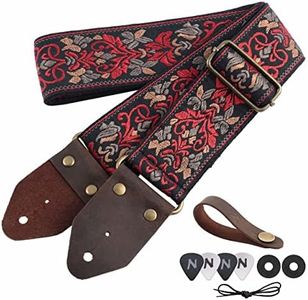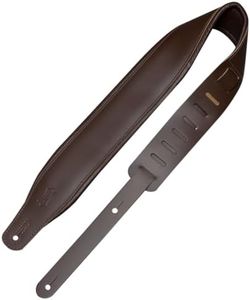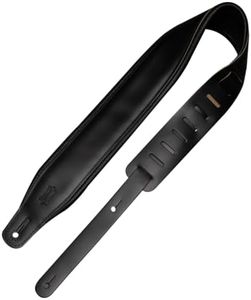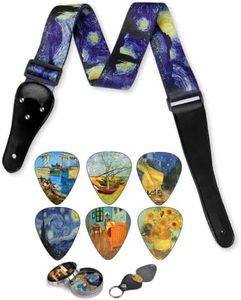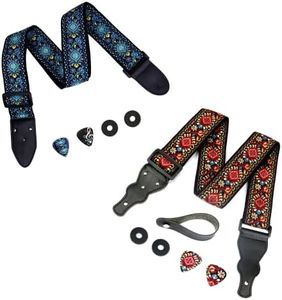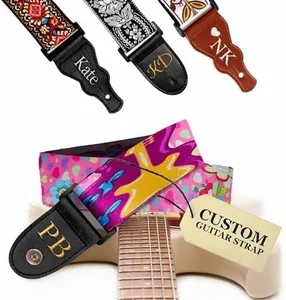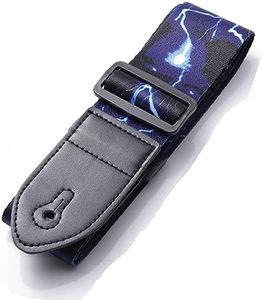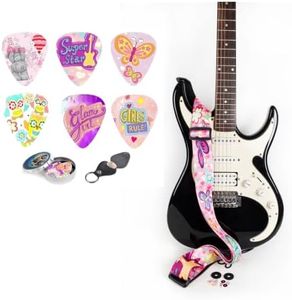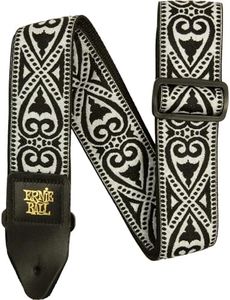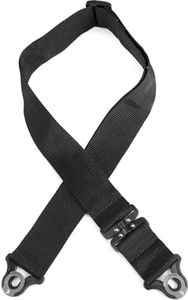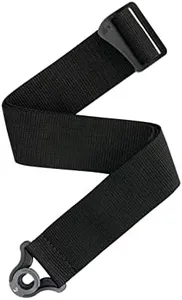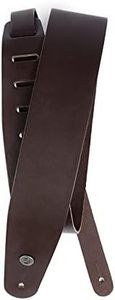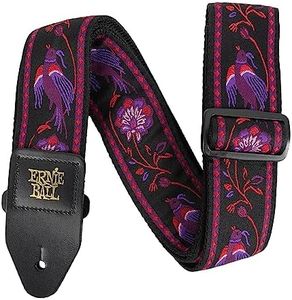10 Best Guitar Straps 2025 in the United States
Our technology thoroughly searches through the online shopping world, reviewing hundreds of sites. We then process and analyze this information, updating in real-time to bring you the latest top-rated products. This way, you always get the best and most current options available.

Our Top Picks
Winner
Ernie Ball Polypro Guitar Strap, Black (P04037)
Most important from
28994 reviews
The Ernie Ball Polypro Guitar Strap, Black (P04037), is a solid choice for guitarists looking for a durable and comfortable strap. The 2-inch wide polypropylene webbing is both strong and comfortable, making it suitable for long playing sessions. The strap is highly adjustable, with a length range from 41 to 72 inches, catering to various playing styles and body types.
The black leather ends add a touch of quality and durability, ensuring the strap stays securely attached to the guitar. The design is simple yet stylish, with a classic black color and the Ernie Ball logo stamped in gold print, giving it a professional appearance. However, it's worth noting that this strap does not feature any additional padding, which might be a drawback for those who prioritize extra comfort.
The black Delrin adjustable buckle and connector are sturdy, but some users might prefer metal components for added durability. In summary, the Ernie Ball Polypro Guitar Strap is a reliable and stylish option, particularly for those who value simplicity and durability, but the lack of padding might be a concern for some.
Most important from
28994 reviews
Nefelibata Guitar Strap,Jacquard Embroidery Cotton Guitar Straps with Crazy Horse Leather Leather Ends for Bass, Electric & Acoustic, Best Gifts for Kids, Guitarists(Retro Red Flower)
Most important from
1747 reviews
The Nefelibata Guitar Strap stands out due to its high-quality materials and thoughtful design. The crazy horse leather ends are durable and have a unique property of developing a glossy layer over time, enhancing its appearance. This makes the strap not just functional but also aesthetically pleasing. The Jacquard embroidery on the cotton strap offers a retro red flower design that is versatile enough to suit various types of guitars, including bass, electric, acoustic, ukulele, and mandolin.
Additionally, the strap is equipped with a guitar pick bag, adding convenience for guitarists who frequently need picks at hand. The included accessories such as custom picks, gaskets, headstock rope, and headband make it a valuable package that saves money on additional purchases. The strap's adjustability from 36 to 61 inches ensures it can be comfortably used by both children and adults.
The strap's wear-resistant and non-slip characteristics are beneficial for active use, and the 5-year product service underscores the company's commitment to customer satisfaction. This guitar strap is ideal for guitarists looking for a stylish, durable, and functional strap that comes with added accessories.
Most important from
1747 reviews
D'Addario Comfort Leather Auto Lock Guitar Strap - Acoustic & Electric Guitar Accessories - Easy to Use Auto Locking Guitar Straps - Uses Existing Guitar Strap Buttons - Leather - 2.5" Width - Brown
The D'Addario Comfort Leather Auto Lock Guitar Strap is an excellent choice for both acoustic and electric guitar players who seek a blend of security, comfort, and style. One of its standout features is the auto-locking mechanism, which is simple to use and ensures your guitar remains securely fastened without needing to modify the instrument's hardware. This feature is particularly beneficial for those who frequently switch guitars during performances or practice sessions.
The strap fits existing guitar pins, making it a hassle-free option for most guitars out there. The 2.5-inch width and soft garment leather with suede underneath provide a comfortable wearing experience, even during long play sessions. Additionally, its adjustability from 43” to 55” allows it to suit a variety of body types and playing styles.
The leather material adds a touch of elegance and durability, though it may not be the best option for those who prefer a lighter, more breathable strap, especially in warmer environments. The brown color and design might not appeal to everyone’s taste, but the availability of different colors and materials gives room for personalization. The D'Addario Comfort Leather Auto Lock Guitar Strap combines functionality and comfort effectively, making it a reliable choice for most guitarists.
Buying Guide for the Best Guitar Straps
Choosing the right guitar strap is essential for both comfort and performance. A good strap can make playing your guitar more enjoyable and can help prevent strain or injury. When selecting a guitar strap, consider factors such as material, width, length, and adjustability. Each of these specifications can impact your playing experience, so it's important to understand what to look for and how to choose the best option for your needs.FAQ
Most Popular Categories Right Now
